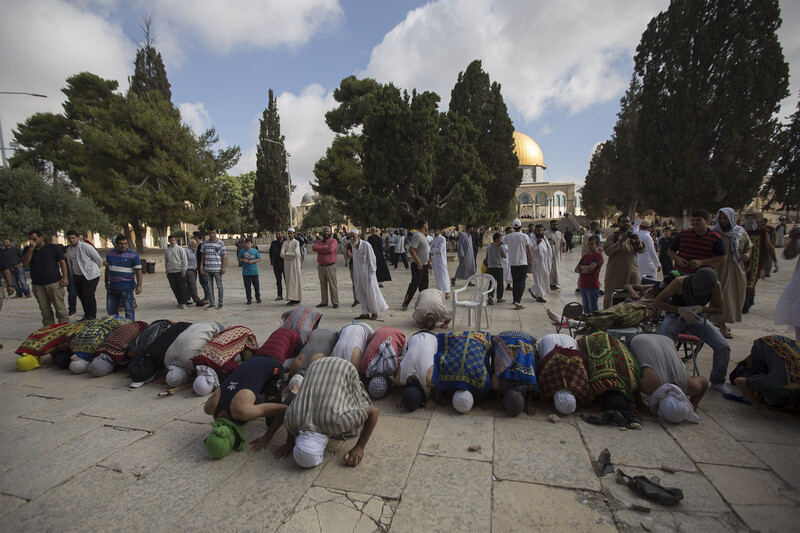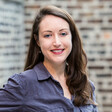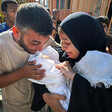Rights and Accountability 20 July 2016

Muhyee Sidqi al-Tibakhi
Two Palestinians who were shot dead in the Jerusalem suburb of al-Ram during separate incidents over the past week were buried on Wednesday.
Muhyee Sidqi al-Tibakhi, 10, died after he was shot in the chest and head on Tuesday, the Palestinian health ministry told media.
Locals reported that the child was killed during confrontations that broke out when Israeli forces raided the town.
Israel denied that its forces used live fire during the the raid. The Tel Aviv newspaper Haaretz reported that army and police spokespersons “speculated that the boy’s death was a result of a local dispute between rival families.”
The Palestinian health ministry rejected this claim, stating, “They cannot deny that they killed him,” the Ma’an News Agency reported. “It’s their responsibility.”
On Thursday, the human rights group Defense for Children International - Palestine stated that the “boy died from a sponge-tipped bullet to the chest fired by Israeli forces during a clash with youth in the central West Bank town of al-Ram on Tuesday evening.”
An eyewitness reported, the group said, “that a paramilitary Border Police officer fired a sponge-tipped bullet directly at Muhyee al-Tibakhi, which struck him in the chest.”
A preliminary examination at a Ramallah, West Bank, hospital “revealed that a projectile hit the left side of al-Tibakhi’s chest, causing internal bleeding, and ultimately heart failure.”
Defense for Children said that al-Tibakhi is the second Palestinian child to be killed by a sponge-tipped bullet fired by Israeli forces; Muhammad Sinokrot, 16, died of his injuries in 2014 after an Israeli Border Police combatant shot the right side of his head, causing a skull fracture and brain hemorrhage.
“In May, Israeli internal investigators closed the case without charging the Border Police officer responsible,” Defense for Children stated.
Muhyee al-Tibakhi is the 26th Palestinian child killed in the West Bank and Gaza Strip so far this year, according to the group.
Last week, 22-year-old Anwar Falah al-Salaymeh was killed in al-Ram during an Israeli army raid.
The army said at the time that soldiers fired on a “speeding vehicle heading towards them,” Ma’an reported, killing al-Salaymeh and seriously wounding one of the other two Palestinians in the car.
“However, the surviving passengers in the car categorically denied that they had attempted to run over the soldiers,” Ma’an added, “saying that they were heading to a bakery and had been unaware that Israeli forces were deployed in the area.”
Israel held al-Salaymeh’s body for six days before releasing his remains to his family overnight Tuesday. He was buried at dawn on Wednesday.
Weekly killings
More than 220 Palestinians have been killed by Israeli forces and armed civilians since October last year, when a new phase in deadly confrontation reached full swing. More than 30 Israelis, as well as two Americans, a Sudanese national and an Eritrean asylum-seeker, were also slain during that period.
Dozens of Palestinians were killed during protests, and many more were slain during what Israel says were attacks or attempted attacks, primarily against soldiers at West Bank settlements and checkpoints. Such attacks have been waged by individual or small groups of Palestinians operating independently of command from armed resistance groups.
The frequency of attacks and alleged attacks resulting in fatalities has dramatically slowed since the beginning of this year. But shooting deaths of Palestinians by Israeli forces in the occupied West Bank, including Jerusalem, continue to occur on a near-weekly basis.

Palestinians carry the body of Muhyee Sidqi al-Tibakhi during the 12-year-old’s funeral in the West Bank town of al-Ram, near Jerusalem, on 20 July.
APA imagesOn Monday, a Palestinian man died in an Israeli hospital hours after he was shot and critically injured by Israeli forces at the entrance of Arroub refugee camp near the southern West Bank city of Hebron.
Mustafa Baradiya was shot in the stomach after he allegedly lightly injured two Israeli soldiers at a checkpoint by stabbing them with a screwdriver.
Medics with the Palestine Red Crescent Society were the first to respond to the scene of the incident and treated Baradiya and the soldiers before Israeli ambulances arrived, the Ma’an News Agency reported.
Palestinian media reported that Baradiya, 51, was a teacher working in the Bethlehem area but was originally from Surif village near Hebron.
The man’s brother, Ibrahim Baradiya, was shot dead in the same location three months earlier after he allegedly attempted to hit a soldier in the head with an ax. No Israelis were reported injured during that incident.
The 14 April slaying broke a three-week respite in deadly violence – the longest such stretch since the beginning of last October.
Human rights groups have condemned Israel’s use of lethal violence as a matter of first resort in such incidents, saying it amounts to an unofficial shoot-to-kill policy encouraged by Israel’s top leadership.
Earlier this year, Patrick Leahy, head of the US Senate Appropriations Subcommittee on Defense, urged the State Department to investigate alleged extrajudicial executions of Palestinians by Israeli forces and other “possible gross violations of human rights … that may have involved recipients, or potential recipients, of US military assistance.”
Youth shot while stopping fight
On Thursday, Israeli forces shot and assaulted Yahya Hijazi, 24, as he attempted to stop a quarrel in Shuafat refugee camp in East Jerusalem, his mother told the Ma’an News Agency.
While on his way to work Hijazi encountered a family fighting in the camp, his mother said. One of the individuals involved was carrying a knife.
“Hijazi tried to stop the physical argument and took the knife away from the family member, when Israeli forces entered the area,” according to Ma’an.
“My son tried to raise his hand to signal to the officers that he had no intention to carry out attacks, but they ignored that and continued to shoot at him,” the youth’s mother told Ma’an.
“Hijazi was shot nine times in one leg, while the other leg was fractured when the Israeli Border Police officers beat him, his mother said, adding that doctors didn’t expect him to be able to walk for three months,” Ma’an stated.
Also within the last week, Israeli forces fired at a Palestinian motorist and detained him after an apparent traffic accident on Route 60, a main highway near Hebron that has seen numerous deadly incidents since October, including the slayings of the Baradiya brothers.
Palestinians in the Hebron area have been subjected to severe movement restrictions in recent weeks after the slaying of two Israelis in the vicinity, one of them a girl stabbed to death in her home in the Kiryat Arba settlement.
Hebron has borne the brunt of the crackdown on the surge in confrontation between Palestinians and Israeli occupation forces.
Jerusalem
The violence first erupted in Jerusalem in reaction to Israel’s unchecked assaults and incursions in the Old City’s al-Aqsa mosque compound.
A growing movement in Israel which enjoys the support of high-level government figures seeks to destroy the existing structures that make up the mosque, the third holiest site in Islam, and replace them with a Jewish “Third Temple.”
The so-called Temple movement believes the site to be the former location of two ancient Jewish temples.

Masked Palestinian protesters pray following confrontations with Israeli police at the al-Aqsa mosque compound in Jerusalem’s Old City on 28 June.
ActiveStillsEarlier this month, the largest group of Jews permitted to visit the al-Aqsa compound in a year entered under heavy police guard.
The family of Hallel Yaffa Ariel, the 13-year-old girl slain in the Kiryat Arba settlement last month, were among the at least 50 persons allowed to enter the site, Haaretz reported.
The girl’s family has appealed for the relaxation of rules restricting visits by Jews to the site, and has asked that the Mughrabi gate, the entrance closest to the Western Wall plaza, a site of Jewish pilgrimage and worship, be named after their daughter.
The Mughrabi gate refers to the Moroccan Quarter of the Old City, which dated back to the late 12th century before it was razed by Israel to make way for the Western Wall plaza in the wake of its conquest and subsequent occupation of Jerusalem nearly 50 years ago.
“On the evening of 10 June 1967 the several hundred residents of the Moroccan Quarter were given two hours notice to vacate their homes,” the scholar Tom Abowd writes in The Jerusalem Quarterly.
“Nearly all of the quarter‘s 135 homes were flattened by the evening of 11 June,” with one resident buried alive beneath the rubble of her home, Abowd adds.
Israel has long restricted Palestinians who carry West Bank and Gaza Strip IDs from freely visiting holy sites in Jerusalem’s Old City.
Visits to the al-Aqsa mosque compound by right-wing Israelis provoked clashes between Palestinians and Israeli police during Ramadan, which concluded earlier this month.
This article was updated on Thursday, 21 July, with information released by Defense for Children International – Palestine on Israel’s responsibility for Muhyee al-Tibakhi’s fatal injury. The age of the boy was given as 12 years old in an earlier version of this article; it has since been changed to 10 based on Defense for Children’s findings.






Comments
Israeli State Murder of Palestinian Children
Permalink R Choolun replied on
How can young children defend themselves against Isralelli Tanks, Helicopter Gunship, Fighter Jets and Armed soldiers.
A two state solution is required now, before further annexation of Palestian land occers yet again.
Killing kids is utterly dishonourable
Permalink JayHobeSound replied on
There is nothing honourable or heroic in shooting kids, period. An adult with a knife should be easily disarmed using Krav Maga. (Maybe KM is a myth; never seen it used in a real world situation.) Or surround the person and throw a big net over him. Like some US police incidents, not every situation warrants a shooting.